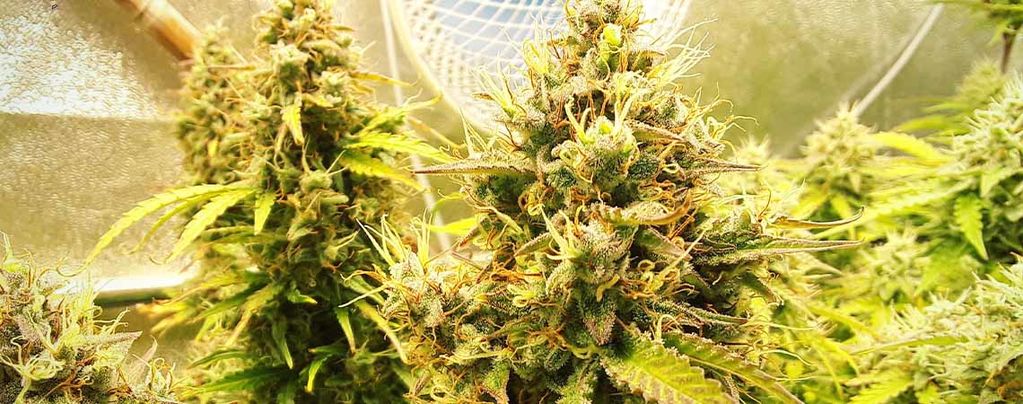
Is Foxtailing In Cannabis Bad?
Foxtailing is a strange phenomenon that causes weird deformities in cannabis buds. But what exactly is foxtailing, what causes it, and should you be worried if some of your buds start developing foxtails? Read on to find out.
Foxtailing is a term used to describe a deformity that can affect flowering cannabis plants. While it can be alarming, in this article you’ll learn all there is to know about foxtailing, what causes it, and whether or not it’s cause for any real concern.
What Is Foxtailing Weed?
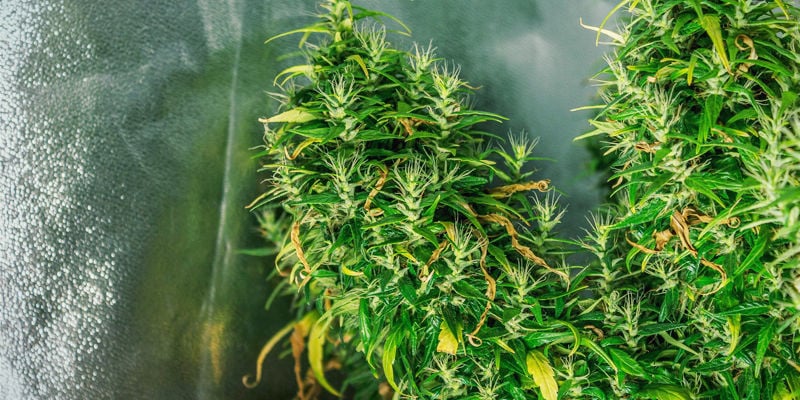
“Foxtailing” refers to a phenomenon in which cannabis buds take on a strange, irregular appearance. As a grower, it can be quite alarming to run into foxtailing, especially if you’ve never encountered it before. Below, we’ll teach you how to properly spot foxtailing, and how to determine if it's "good" or "bad" foxtailing.
What Does Foxtailing Look Like?
Rather than fatten up, foxtailing buds grow tall and slender. If you look at them closely, you’ll notice that the foxtails are actually individual calyxes stacked on top of each other to form long, thin, tower-like structures. You should also see thin sugar leaves pointing out from under some of the calyxes, giving the buds a strange, bushy appearance similar to that of a fox’s tail (hence the name).
Reasons for Foxtailing
There are three main variables that can cause or affect foxtailing in cannabis plants. Understanding these causes and how to spot them will help you understand the effect foxtailing is having on your plants, and how to go about treating it.
Genetics
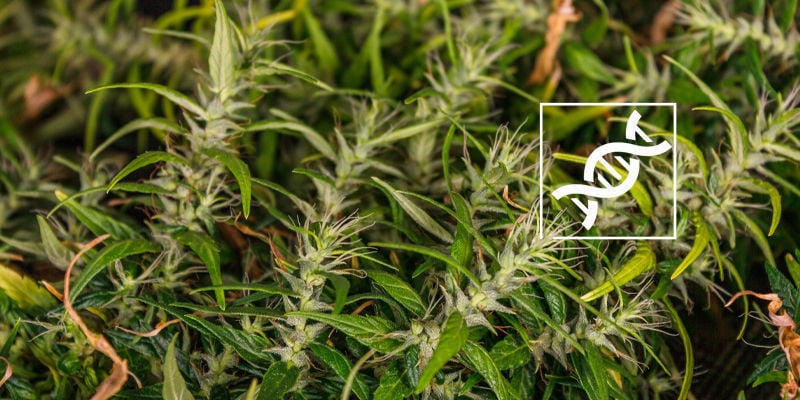
Some cannabis strains simply are more likely to foxtail than others. Over the last 40+ years, cannabis breeders have been playing around with cannabis’ vibrant gene pool to create all kinds of different strains, each with its own unique characteristics.
Foxtailing, in some cases, is the direct result of vigorous breeding; some breeders actually love this trait and enjoy growing plants that produce unique flowers. So, if your plants are foxtailing and you’re certain it's not due to any sort of stress (which we’ll go into in more detail below), you may just be growing a strain that’s genetically predisposed to exhibit this unique trait.
Heat Stress
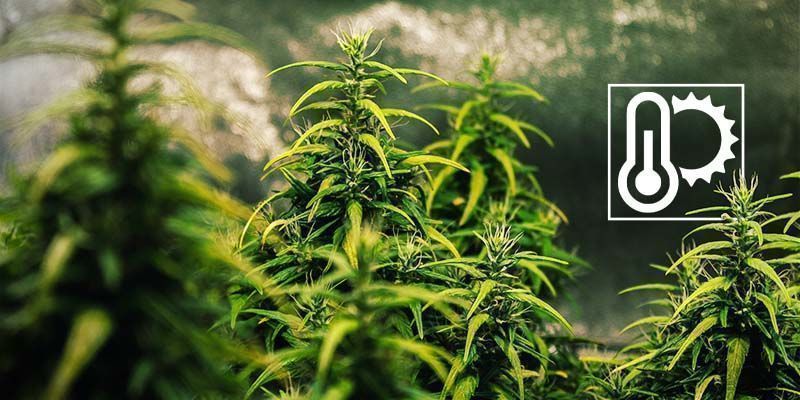
Stress is the second main (and arguably more common) cause of foxtailing in cannabis plants. And one of the main stressors herein is excessive heat.
Cannabis plants thrive in warm temperatures between 20 and 30°C (remember that different strains may prefer slightly cooler or warmer temperatures). Excessive heat, however, can affect all aspects of a plant’s biology, such as its ability to take up nutrients and water, photosynthesise, or grow healthy roots, foliage, and flowers.
Keep in mind that cannabis is a pretty hardy plant, and most reputable strains should be able to stand up to one or two days of high temperatures (especially outdoors). If, however, the temperatures in your garden, greenhouse, or tent/room consistently clock in above 30–32°C (particularly during the flowering phase), you may just see your plants start to foxtail.
Light Stress
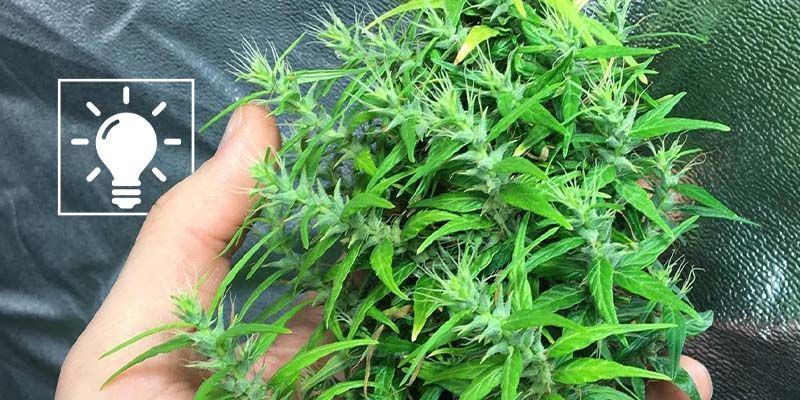
Another main stressor responsible for causing unwanted or “bad" foxtailing is light stress. While cannabis is a sun-loving plant, too much artificial light can easily stress cannabis plants and cause them to foxtail.
Grow lights that run extremely hot or are hung too close to a plant’s flowers can quickly cause stress and subsequent foxtailing. If you’re an indoor grower, make sure to position your lights properly and adjust them throughout your grow to accommodate the height of your plants. Where possible, we also recommend ditching HID lights for LEDs that emit far less heat.
Foxtailing Cannabis Buds: Good or Bad?
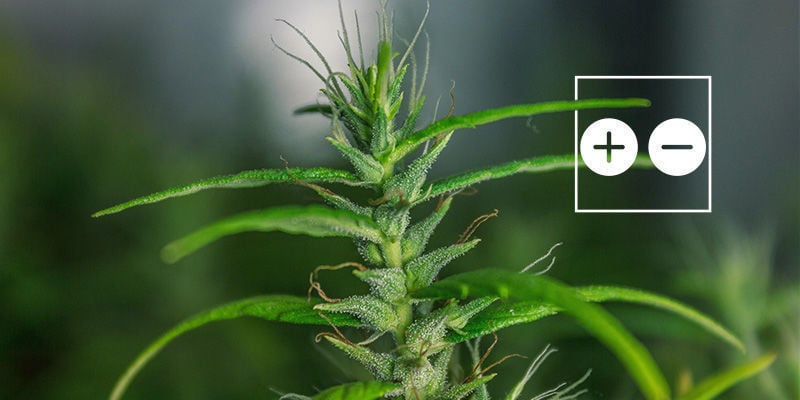
Foxtailing shouldn’t be an issue if a strain is genetically predisposed to display this trait. We refer to this as “good foxtailing”. If it’s caused by stress, however, foxtailing isn’t desirable, and you should move to resolve the underlying cause as soon as possible.
If you’re an eccentric grower who loves weird and unique cannabis strains, we highly recommend checking out the following foxtailing cultivars. If not, read on to learn how to prevent bad foxtailing in your grow room.
Blue Cheese (Royal Queen Seeds)
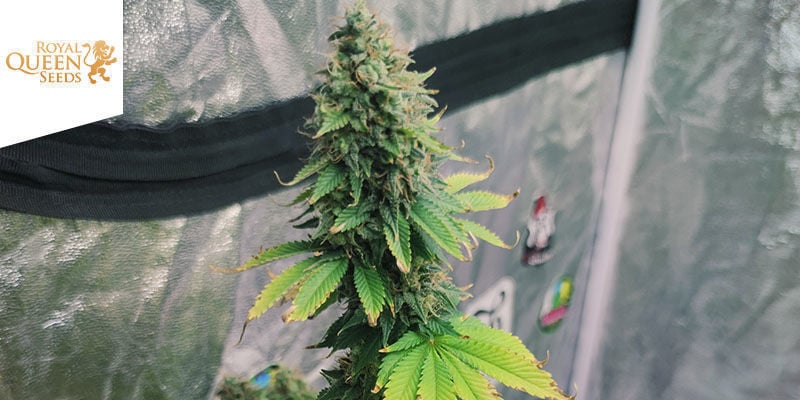
Royal Queen Seeds is easily one of our favourite seed banks, and their Blue Cheese is truly special. A cross between, you guessed it, Cheese and Blueberry, this potent indica-dominant hybrid delivers delicious aromas, high potency, and incredible yields in just 7–8 weeks of flowering.
With earthy, musky, cheesy aromas all combined with hints of sweet berries, Blue Cheese is super aromatic. Plus, it grows extremely well both indoors and outdoors, and produces beautiful, dense buds that often boast blue or purple hues. These flowers come slathered with a thick, sticky layer of resin that's jam-packed with all your favourite cannabinoids and terpenes. Foxtailing isn’t guaranteed with this strain, but numerous growers have reported it.
Train Wreck (Greenhouse Seeds)
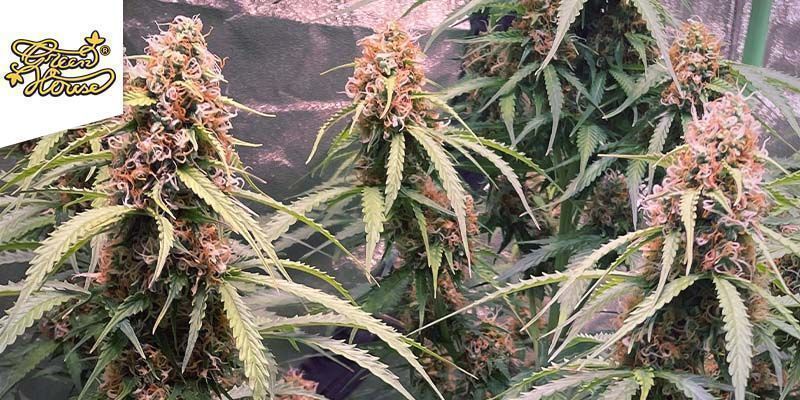
Greenhouse Seeds needs little introduction, and neither does their flagship strain Train Wreck. Bread from unique Californian cannabis varieties, Train Wreck is one of those mystery strains whose exact origins are hard to pinpoint. Nonetheless, her aromas, flavours, and potency have made Train Wreck a favourite all around the globe, particularly among medical users.
Train Wreck is slightly sativa dominant and takes roughly 9–10 weeks of flowering to reach maturity. Her buds are, however, well worth the wait; with up to 22% THC, a rich, musky pine aroma, and deeply relaxing effects, it’s no wonder Train Wreck has become a household name in the cannabis community. While it’s not guaranteed to foxtail every time, Train Wreck is renowned for developing this trait in some phenos.
Dr. Grinspoon (Barney’s Farm)
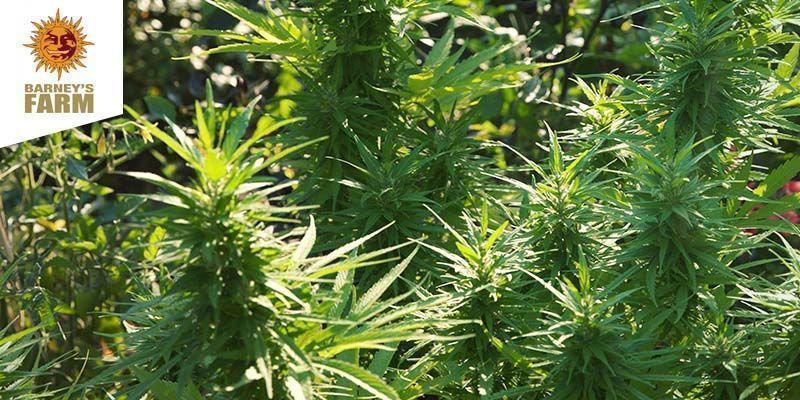
Named after none other than Dr Lester Grinspoon, psychiatrist, researcher, and cannabis advocate, Dr Grinspoon by Barney’s Farm is an heirloom sativa variety treasured for its uplifting euphoria and tall, lanky structure—and its foxtailing buds!
As is to be expected of this kind of strain, Dr Grinspoon takes 13–14 weeks to flower fully and can reach heights of 160cm indoors and well over 2m outdoors. Its flowers pack up to 23% THC, a rich aroma that combines honey and pine notes, and massive euphoria unmatched by any other variety.
How To Fix Foxtailing Buds
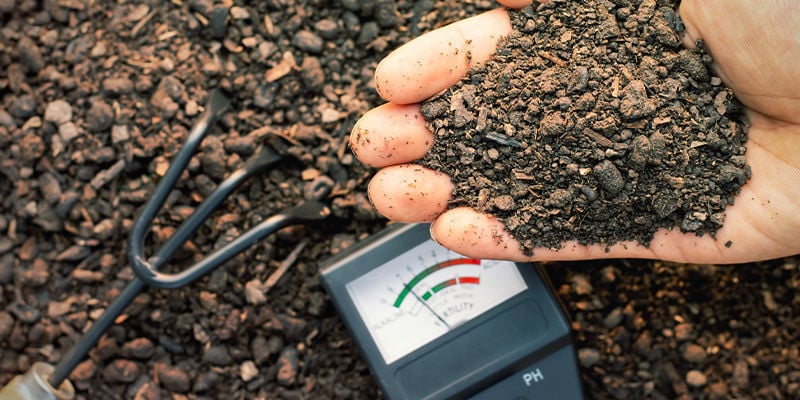
If you’re not a fan of foxtailing or you’re worried about the structure of some of your buds, don’t fret; follow the simple steps below to reduce potential stress in your grow room and restore balance to your plants.
Reduce Stress
If you’re noticing some early signs of foxtailing or other odd structures, we recommend you act quickly to review all aspects of your grow and ensure key measurements are sitting where they should be.
Start with the obvious things first; ensure you’re not over- or under-watering, that your fans are working properly, and that temperature/relative humidity are optimal. Also, check for any pests or pathogens that could be stressing your plants and causing the problem.
Next, dive a little deeper and check your soil by measuring its pH and EC count prior to, during, and after feeding and watering. pH issues are silent stressors that can affect all aspects of a plant’s growth and produce all kinds of symptoms, including foxtailing.
Adjust Light Distance
Once you’ve ticked all the above boxes, make sure to check your grow lights and ensure they are hanging at an optimal height (roughly 30cm from the top of your canopy). Close lighting or excess heat from HID or CFL lights is another main cause of bad foxtailing.
Avoid Temperature Fluctuations
Finally, do a deep dive on the temperatures in your grow room to ensure your plants aren’t subject to heat stress. This means going beyond just checking the numbers on your thermo-hygrometer. Instead, you’ll want to log the temperatures in your grow room over multiple days—both when your lights are on and off—to make sure there are no abnormal temperature fluctuations causing your buds to foxtail.
How and When To Harvest Foxtailing Buds
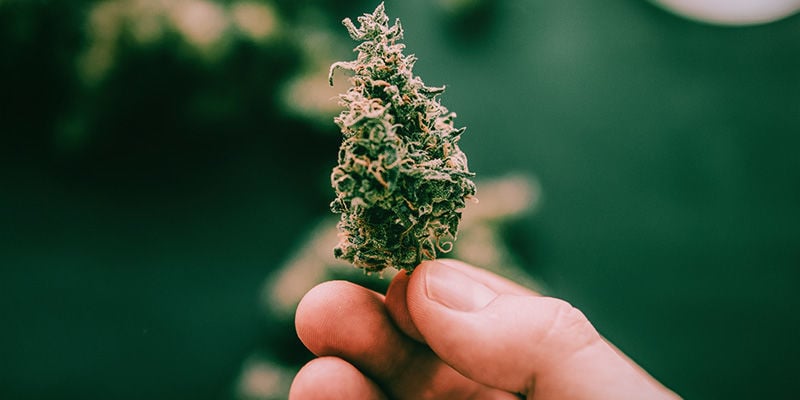
While foxtailing can be a sign of stress and a concern for growers, remember that foxtail buds are completely safe to smoke. Though they’ll be a little less dense, and therefore weigh a little less, than regular buds, there should be nothing stopping you from harvesting a foxtail bud, packing it into a cone, and enjoying it like you would any regular flower!
-
 5 min
September 29, 2020
Use Monster Bud Boost Pack To Grow Fruitier Cannabis Buds
The Monster Bud Boost Pack helps you grow smarter, not harder, to harvest the payload of your dreams. Keep reading to find out how you can supercharge bud size and flavour.
5 min
September 29, 2020
Use Monster Bud Boost Pack To Grow Fruitier Cannabis Buds
The Monster Bud Boost Pack helps you grow smarter, not harder, to harvest the payload of your dreams. Keep reading to find out how you can supercharge bud size and flavour.
-
 4 min
April 10, 2018
6 Ways To Increase Cannabis Yields
Increasing cannabis yields is of paramount importantance to all growers. With our 6 simple methods even tiny gardens of just one or two cannabis plants can produce a heavy harvest.
4 min
April 10, 2018
6 Ways To Increase Cannabis Yields
Increasing cannabis yields is of paramount importantance to all growers. With our 6 simple methods even tiny gardens of just one or two cannabis plants can produce a heavy harvest.
-
 4 min
March 22, 2017
How To Have A Stress-Free And Successful Outdoor Stealth Grow
Outdoor cultivation can be an ideal way to keep a low key grow on the go - if you are careful about it. It's important to consider all the factors at play so that you can work with your plants free...
4 min
March 22, 2017
How To Have A Stress-Free And Successful Outdoor Stealth Grow
Outdoor cultivation can be an ideal way to keep a low key grow on the go - if you are careful about it. It's important to consider all the factors at play so that you can work with your plants free...
-
 4 min
November 2, 2016
The Ultimate Temperatures For Growing Cannabis
Optimal temperatures are essential for creating top-notch bud. Let's find out the details behind the thriving temps of cannabis plants, and how to achieve them.
4 min
November 2, 2016
The Ultimate Temperatures For Growing Cannabis
Optimal temperatures are essential for creating top-notch bud. Let's find out the details behind the thriving temps of cannabis plants, and how to achieve them.
-
 3 min
June 24, 2016
7 Common Causes Of Stress For Your Cannabis Plant
Occasional stress on your plants is no reason to panic. However, some types of stress can severely affect your plants’ health. Here are the 7 most common causes.
3 min
June 24, 2016
7 Common Causes Of Stress For Your Cannabis Plant
Occasional stress on your plants is no reason to panic. However, some types of stress can severely affect your plants’ health. Here are the 7 most common causes.








 United States
United States








